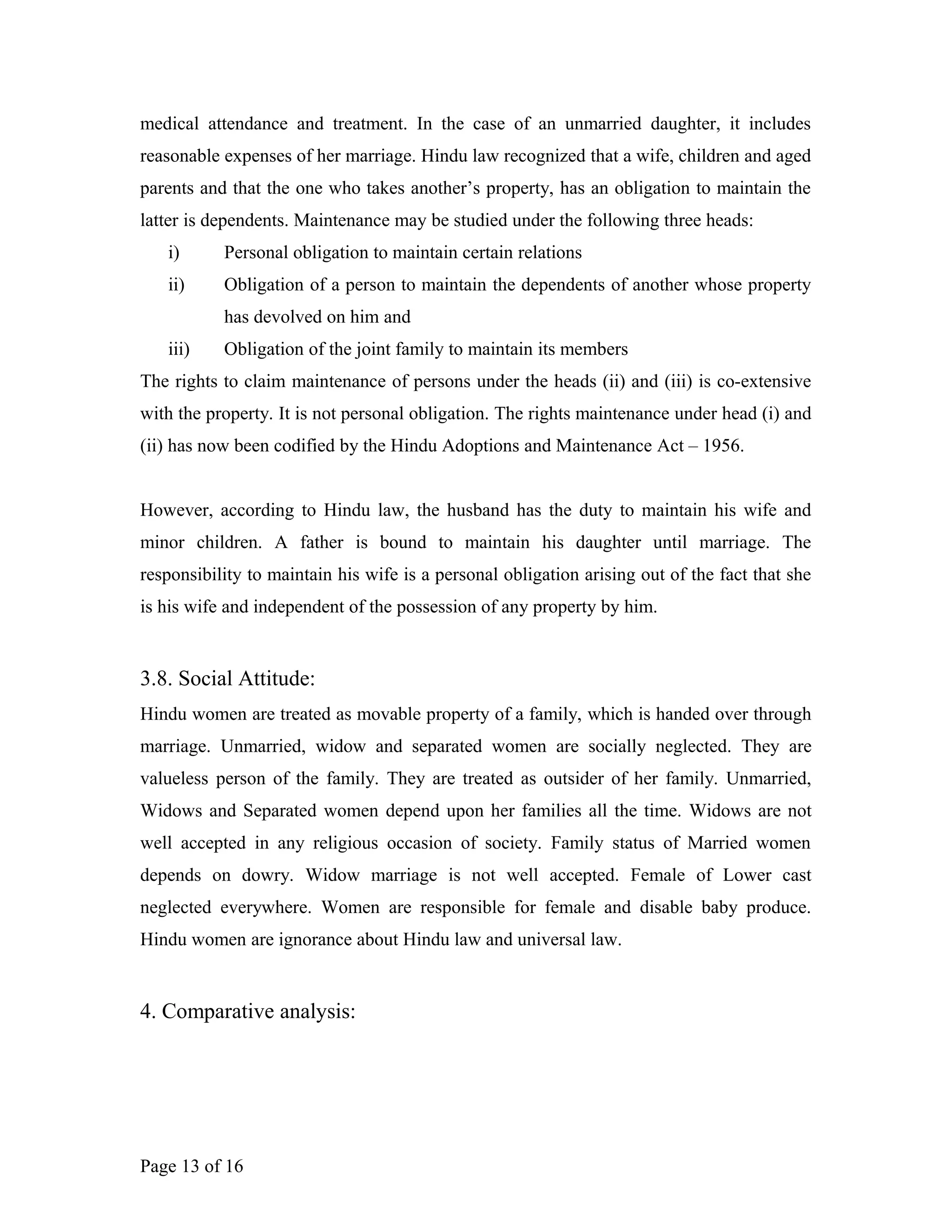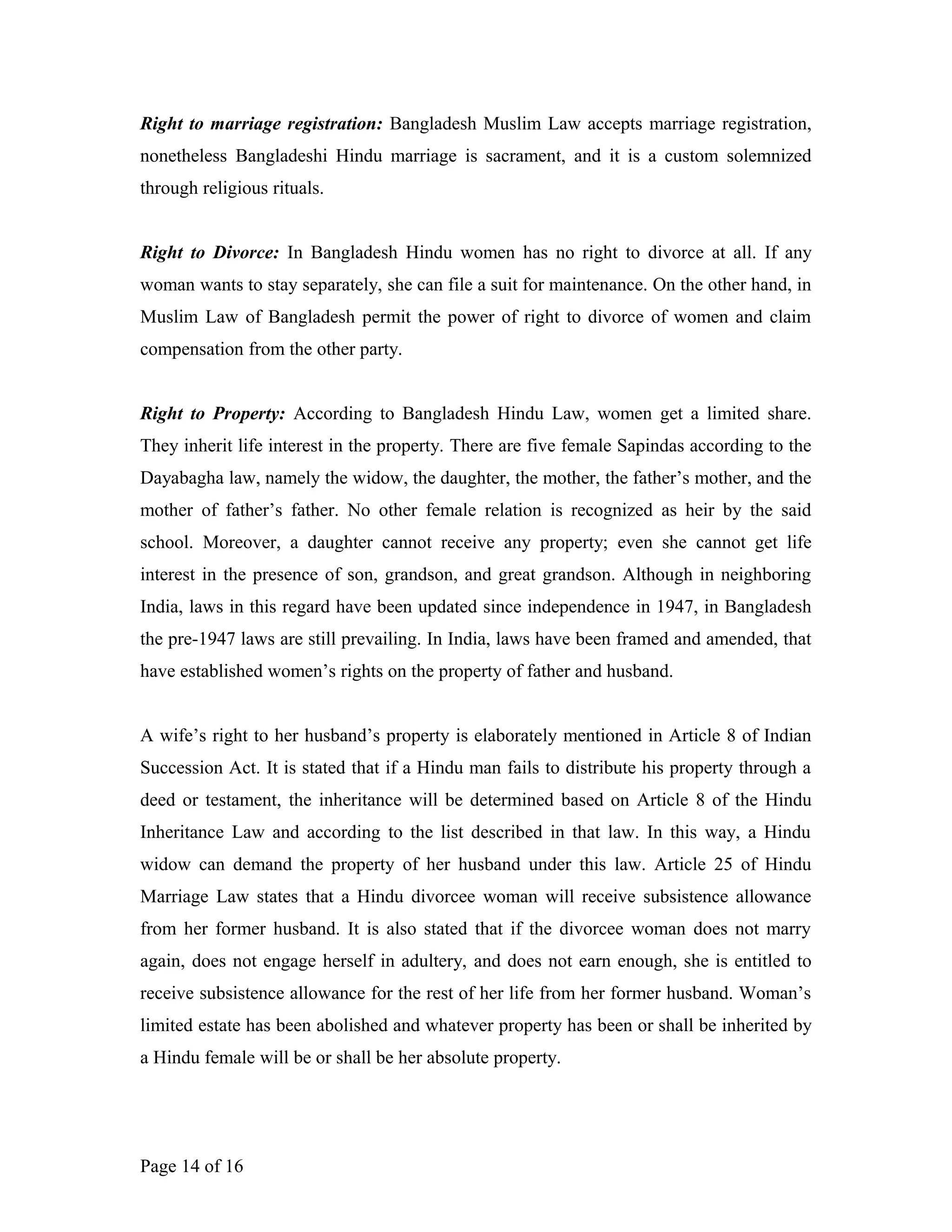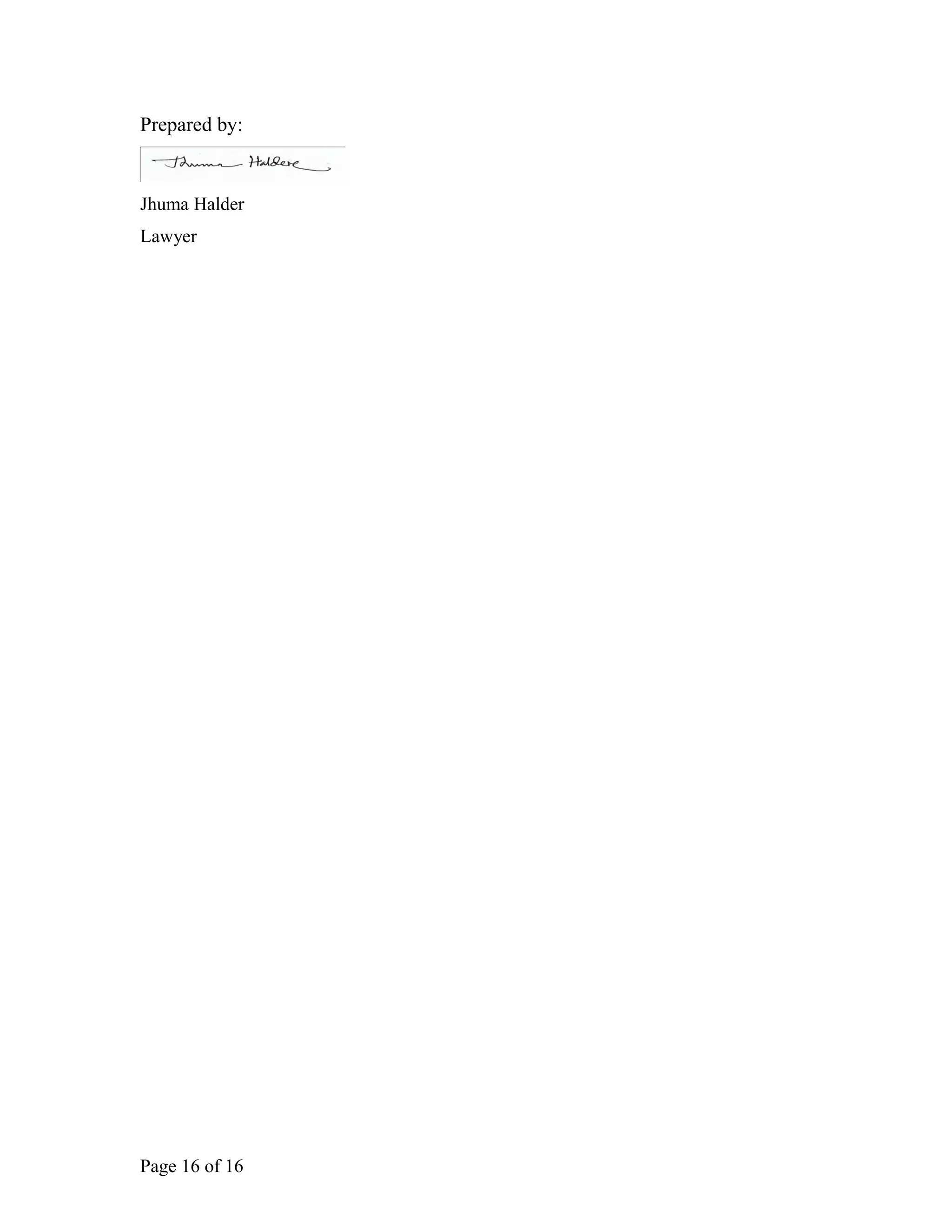Hindu Personal Law in Bangladesh discriminates against women's equal rights in several areas:
1. Marriage - Under the Dayabhaga and Mitaksara schools of Hindu law, certain types of marriages deprive women of inheritance rights.
2. Inheritance - Hindu law, especially the Dayabhaga school followed in Bangladesh, restricts women's inheritance rights and ability to own property. Daughters receive half the share that sons receive.
3. Divorce - It is difficult for women to obtain divorces, while men can easily divorce their wives. Upon divorce, women often do not receive proper alimony or custody of children.
Hindu Personal Law in Bangladesh continues to discriminate against
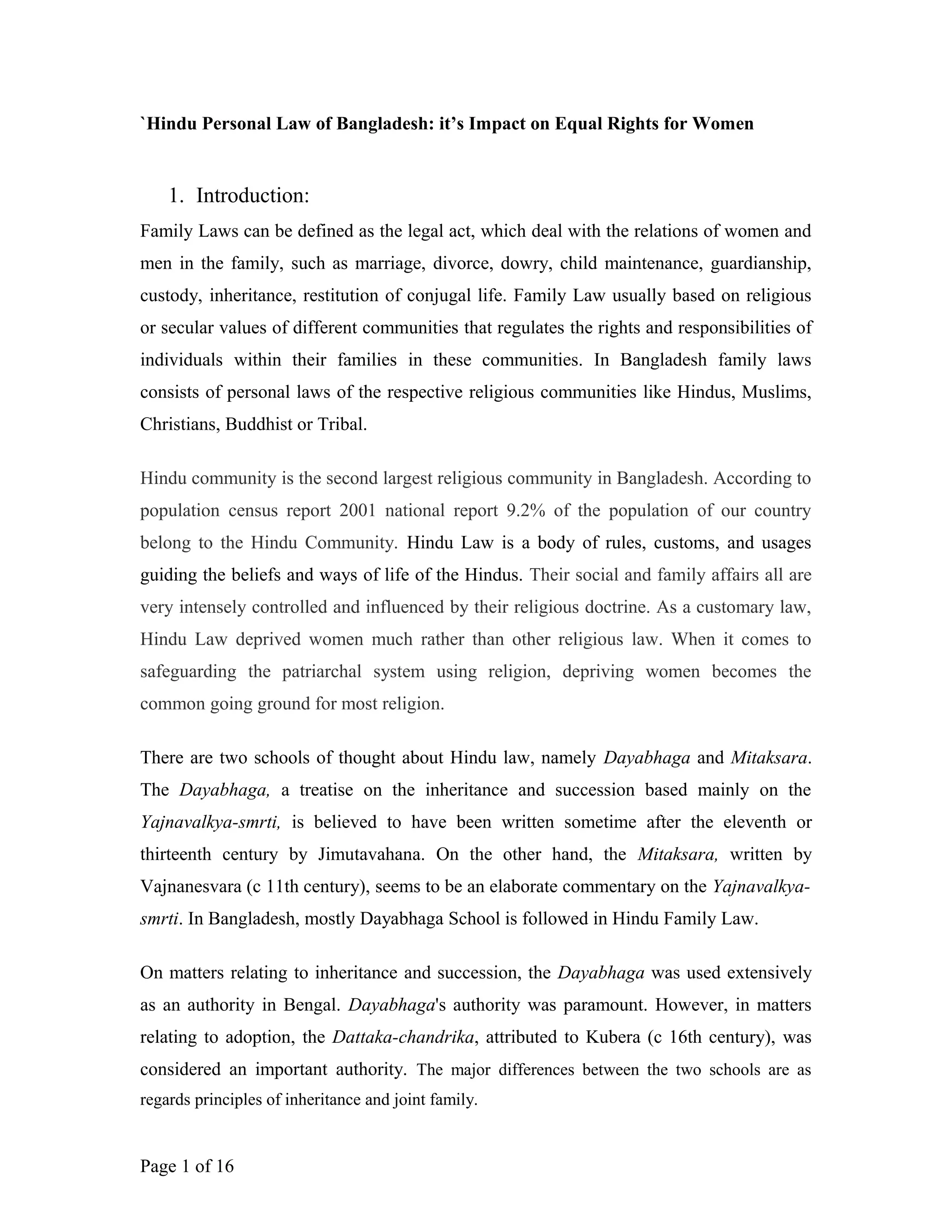
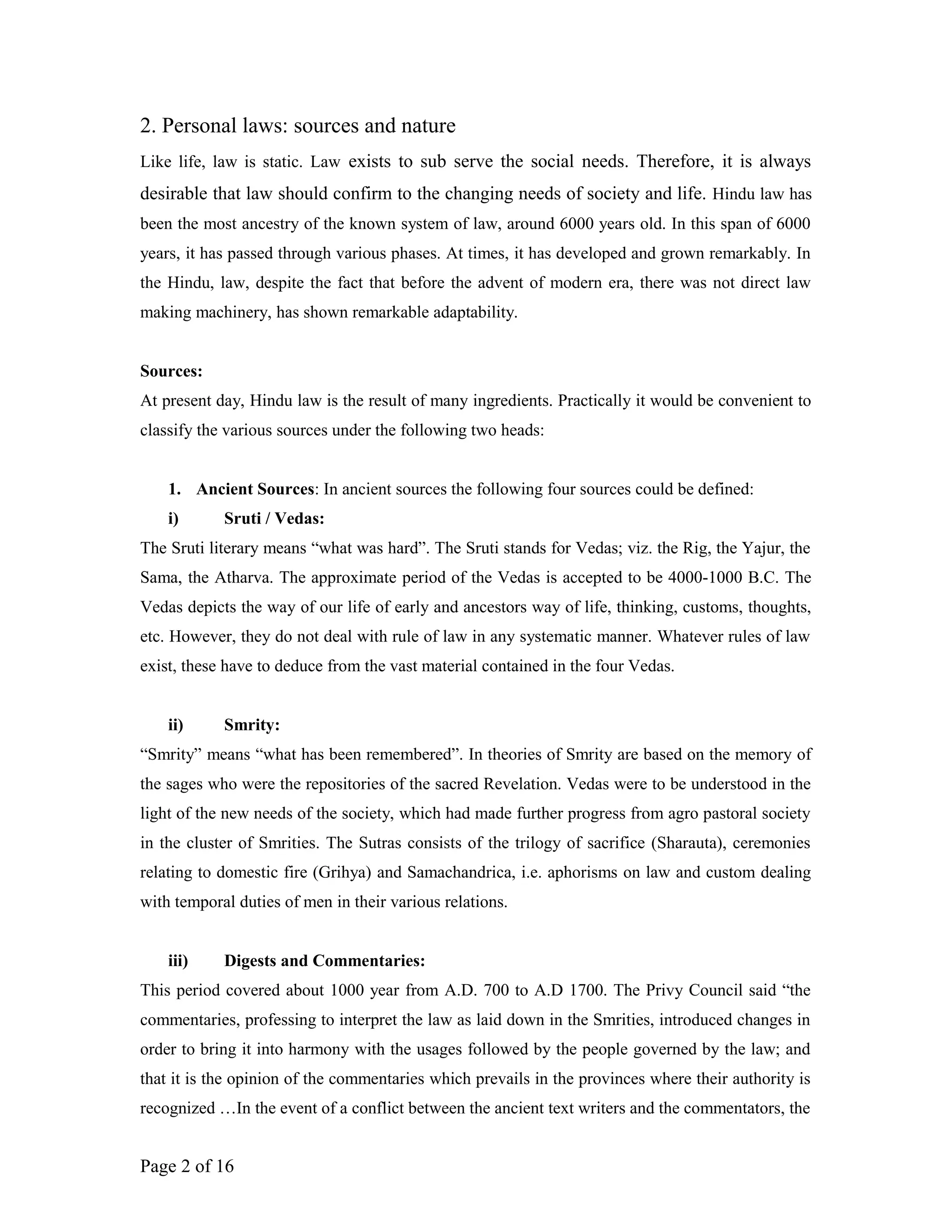
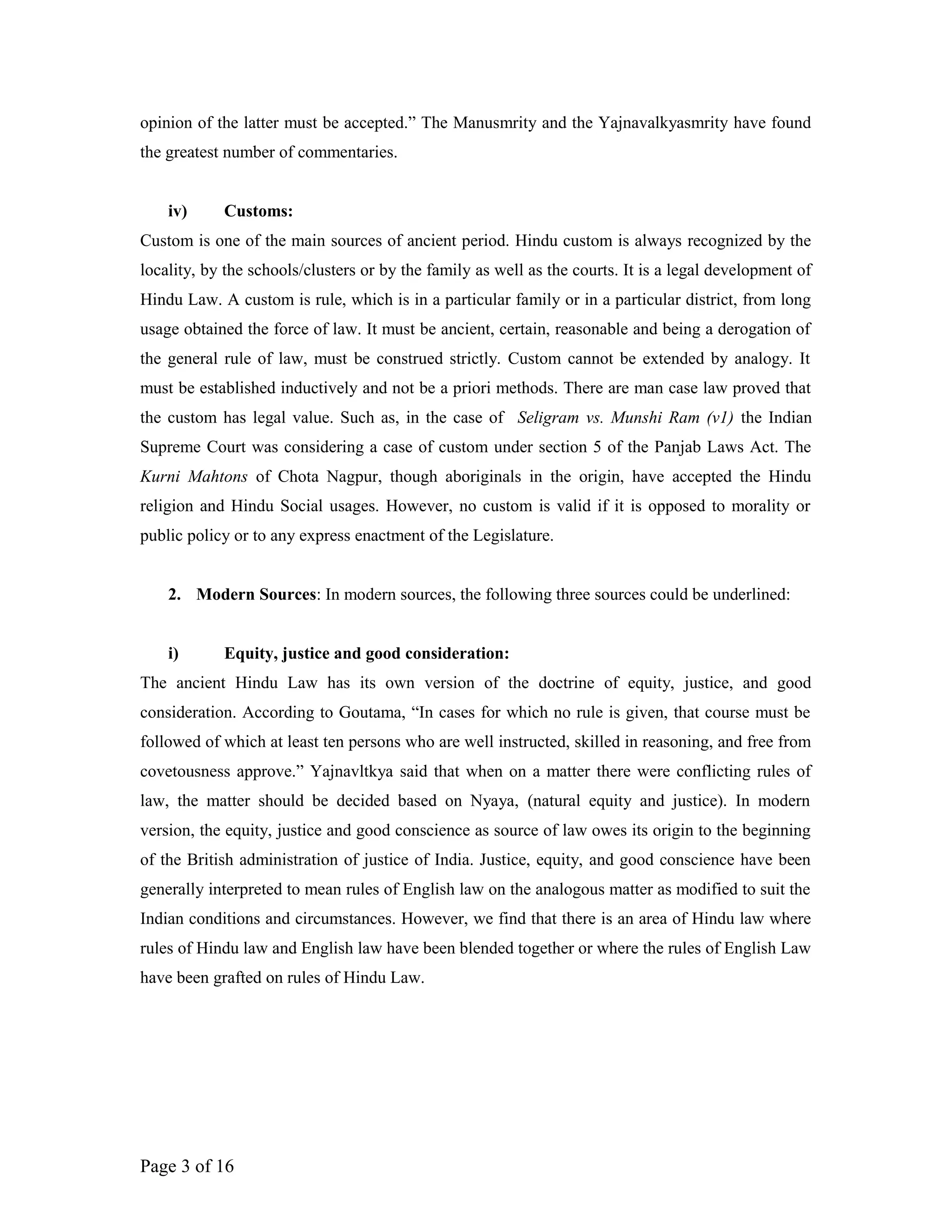
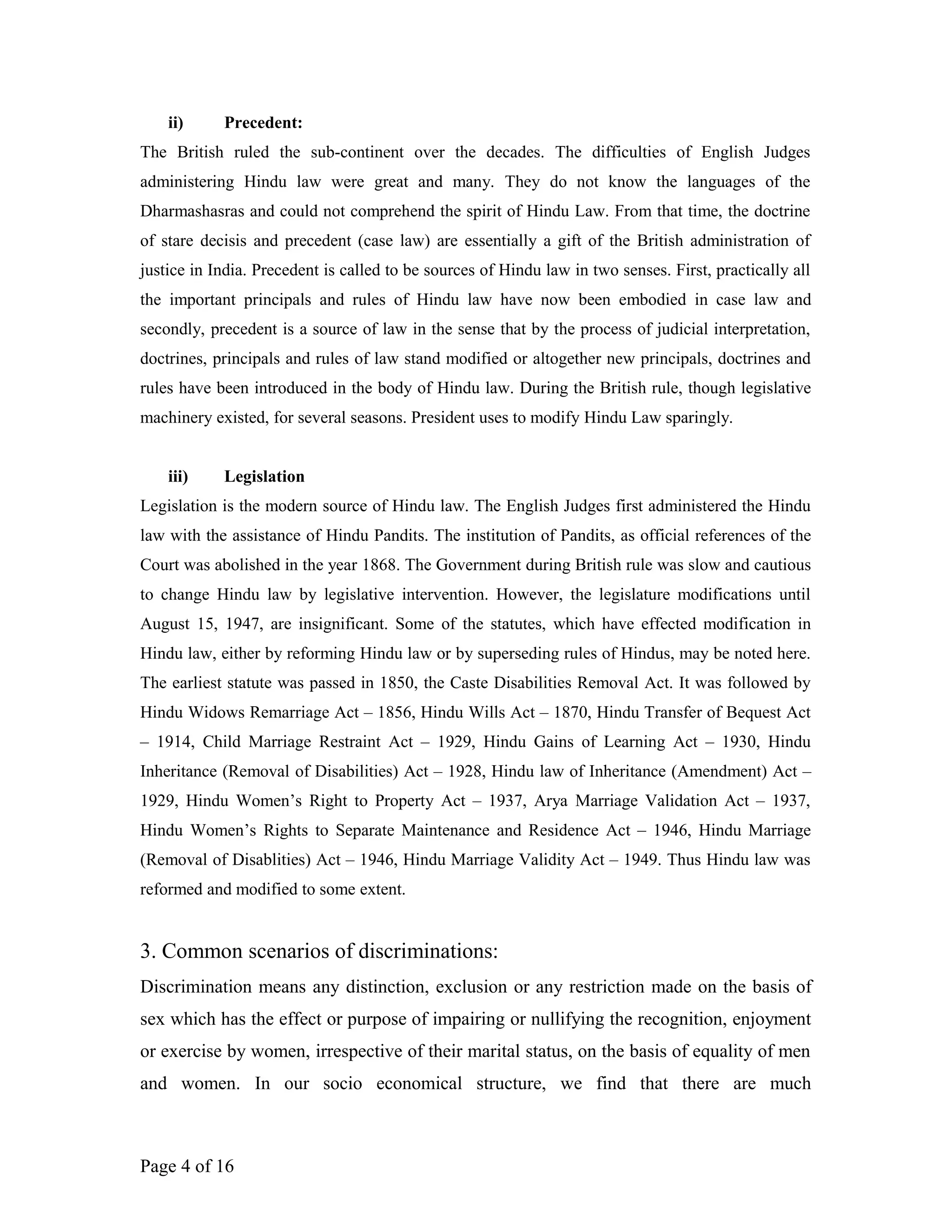
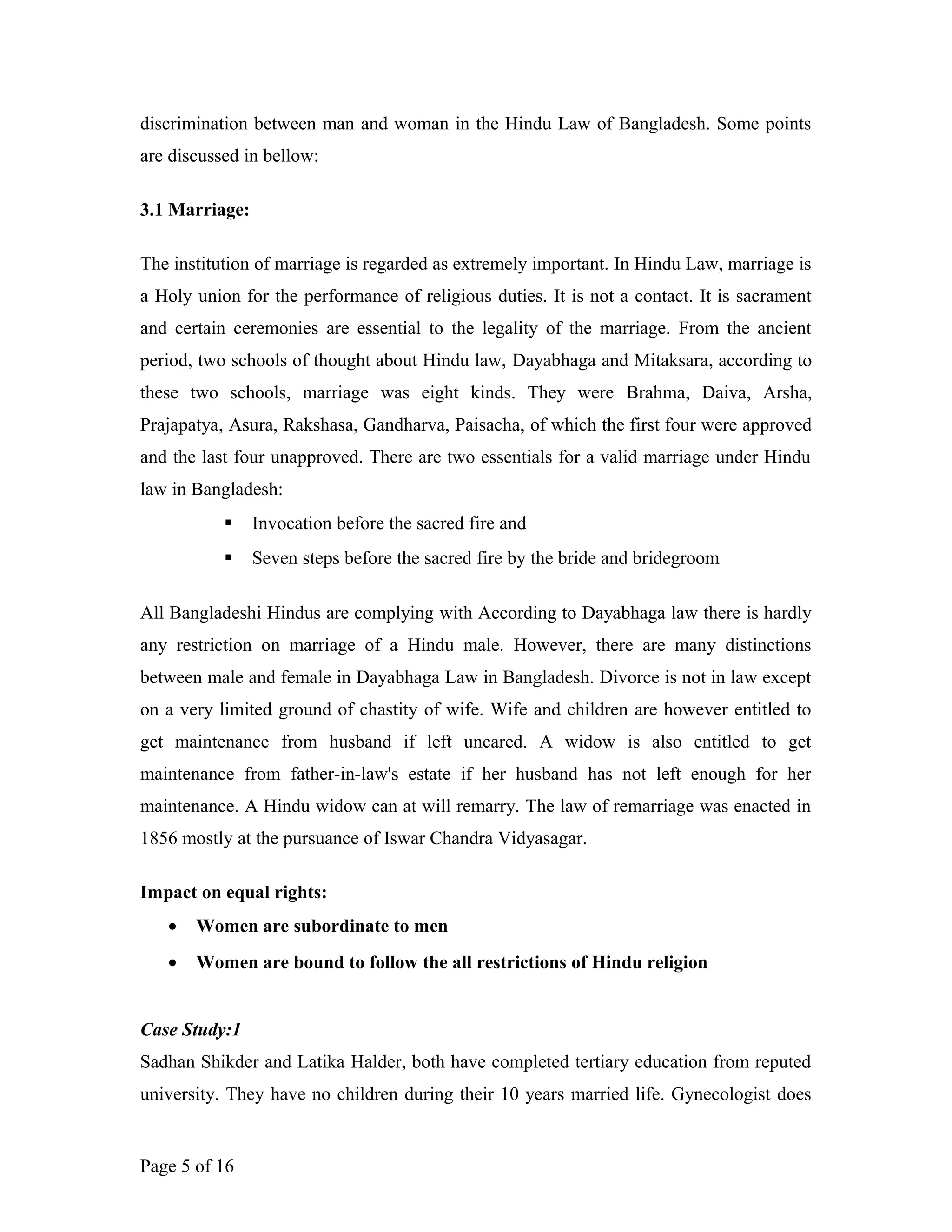
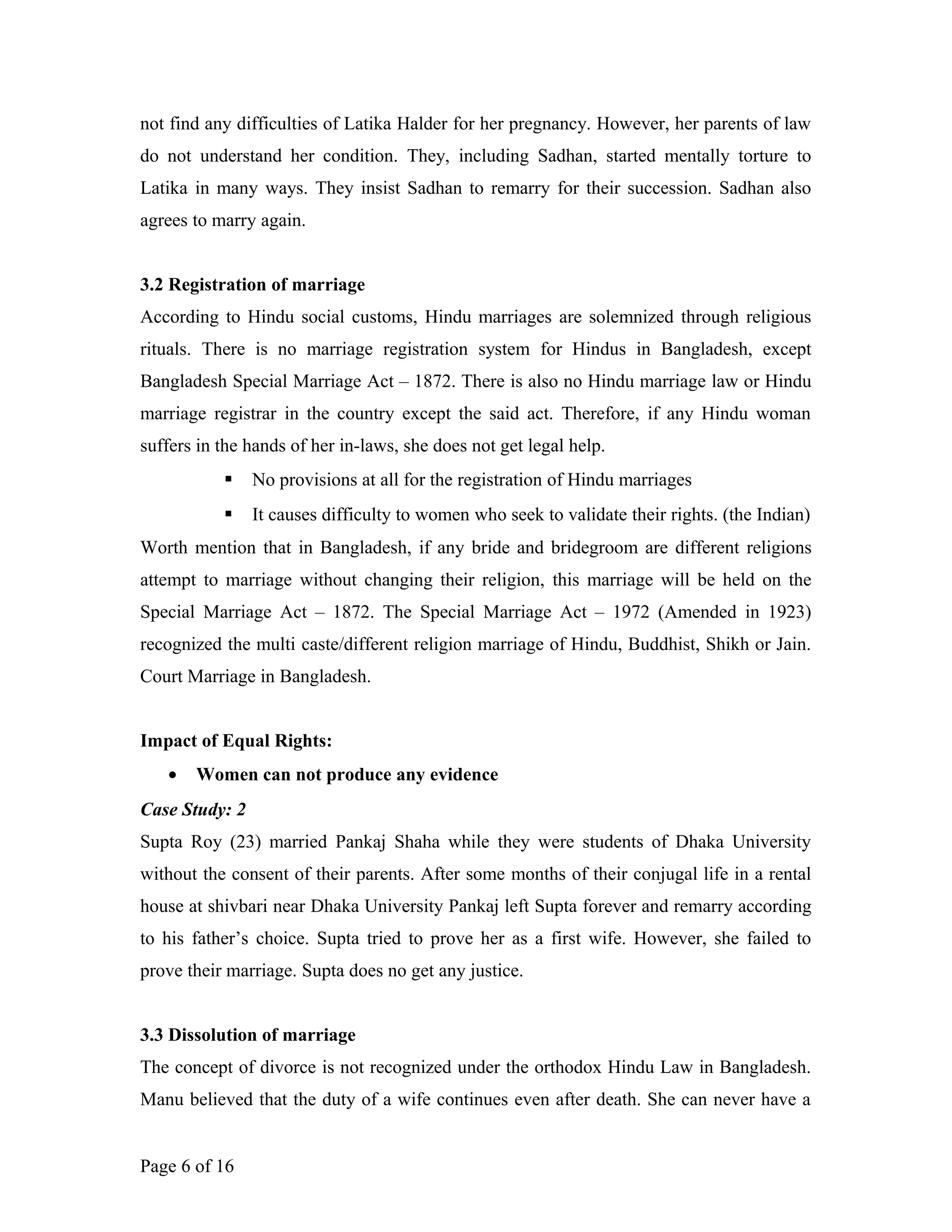
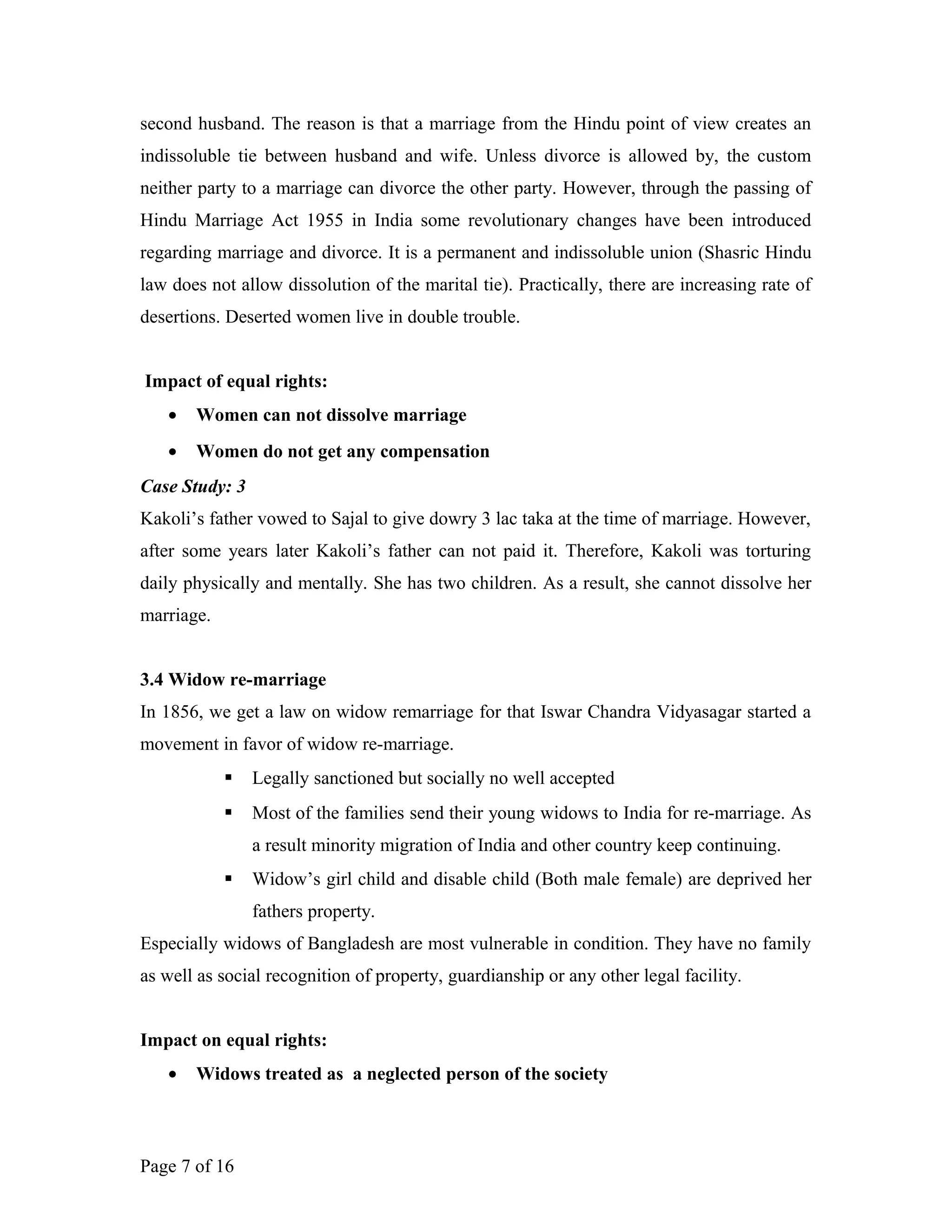
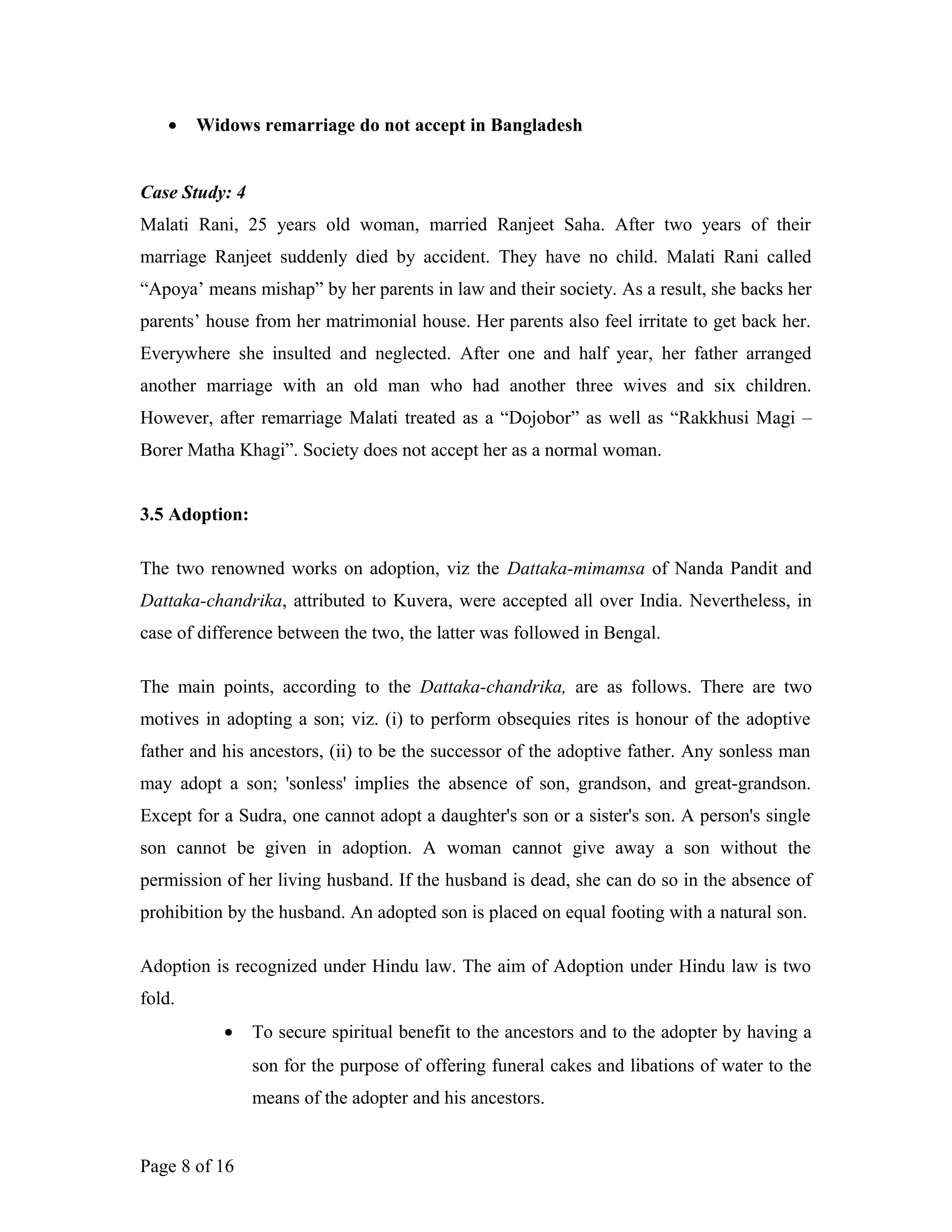
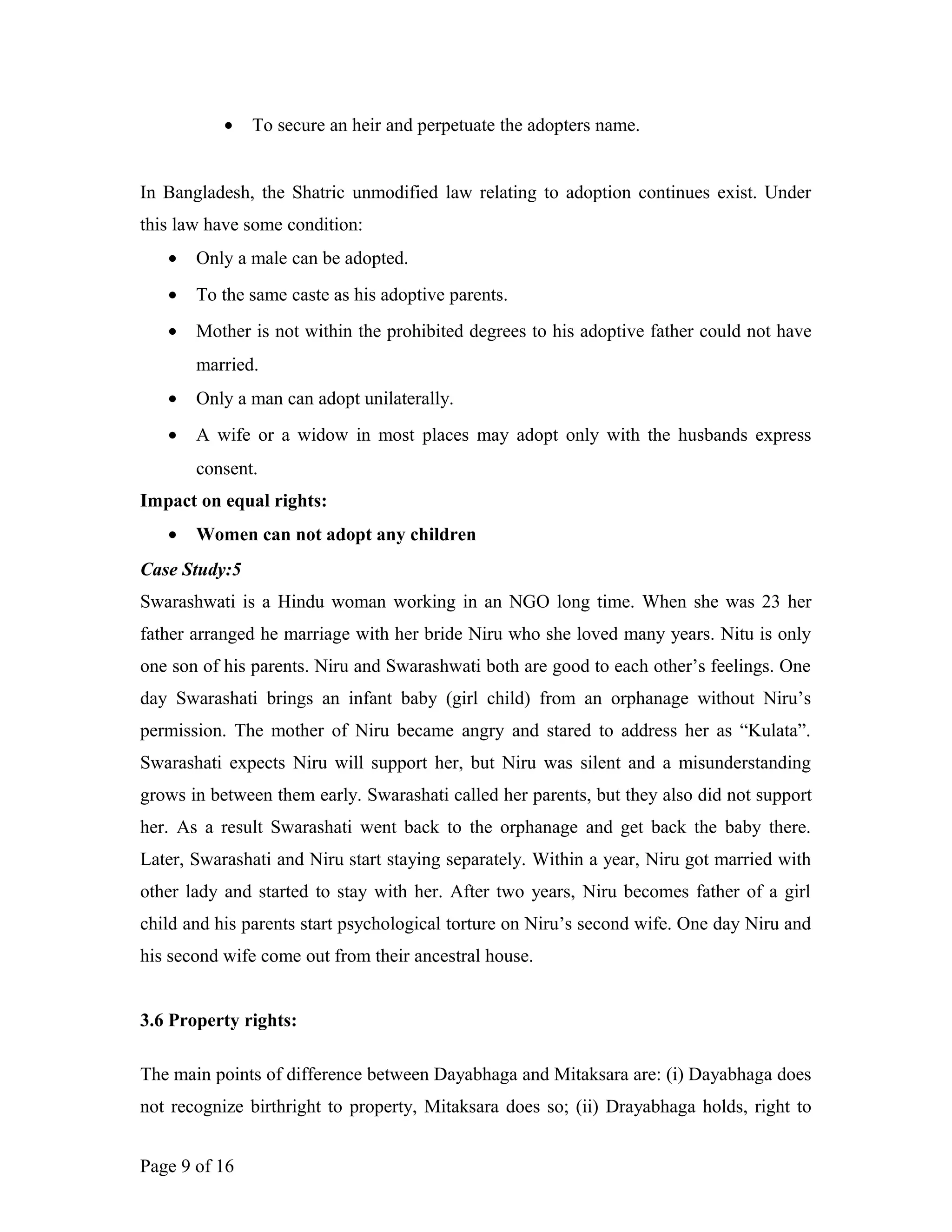
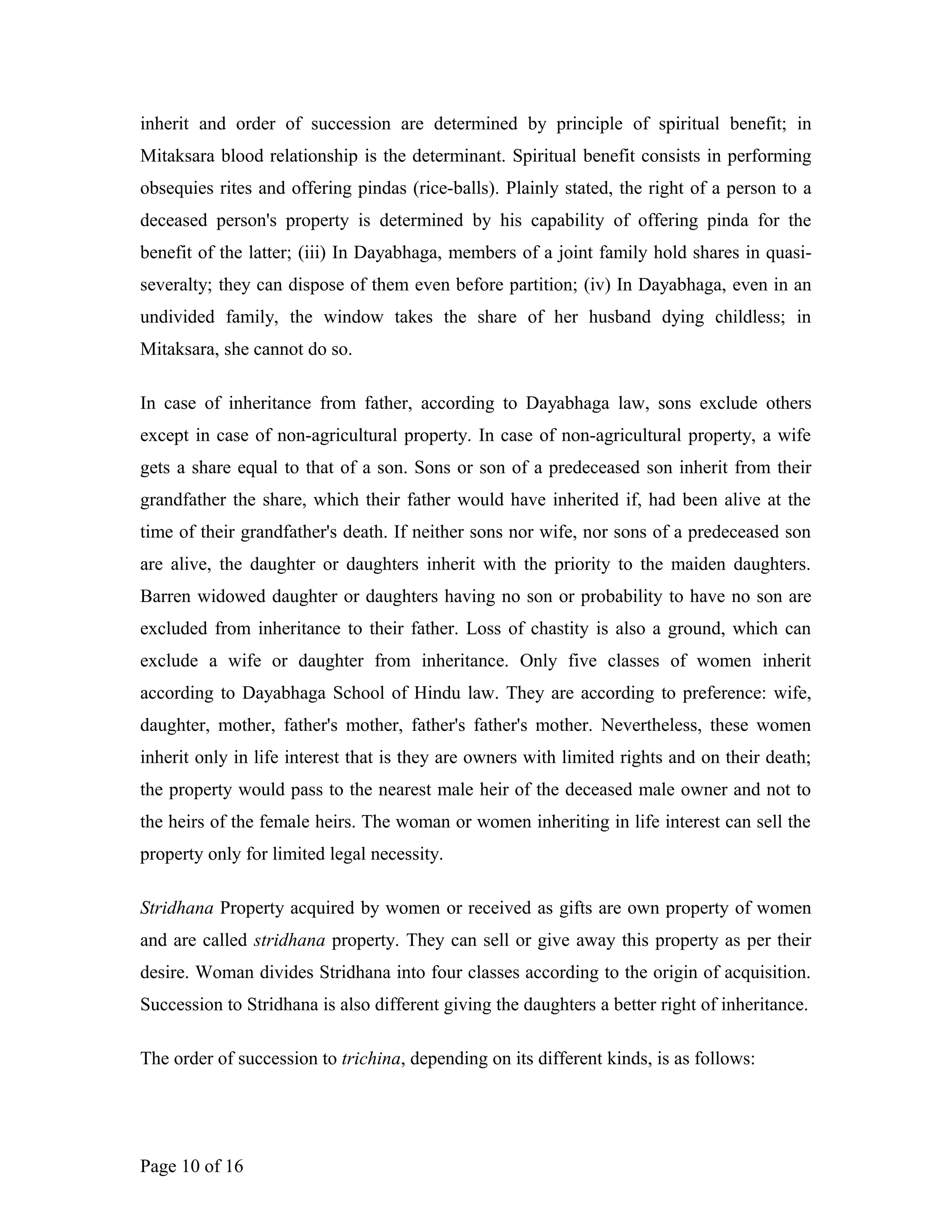

![Disowning or to disinherit an heir is permitted in Hindu law. Religious endowments are
common in Hindu law and person appointed for its management is called shahayet. In the
absence of the heirs the property of the deceased male will vest in his preceptor, pupil
and fellow-student in this order.
No one can trace the exact time or year of the birth of Hindu law. However, it is believed
that Hindu law was not created or promulgated in a day like other laws. It was probably
grown through a process of evolution and custom until the writers made it a law. [Sures
Chandra Banerji and Tapan Kumar Chakraborty]
In Bangladesh the kinds of property that a Hindu women may possess continues to be
divided in to:
i) Stridhan and
ii) Property inherited by her and to which she has limited rights. The daughter is fifth in
line to her father’s property. However, Hindu law is permitted for five kinds of women
for giving property rights.
• Widow
• Mother
• Daughter
All of the women are used her property in lifetime but unlimited right.
Effect of equal rights
• Women are deprive form succession
Case Study:6
A Hindu widow woman, Government officer, has only one minor daughter. Her parents
in law died and she has two sisters in law and one brother in law. Her brother in law has
two children, one is son, and another one is daughter. He sent his son and daughter to
Kolkata for their better future. The widow woman claims property for her daughter’s
education. However, the family members of matrimonial house do not response her.
3.7 Maintenance:
The term maintenance has been used in a wide sense. Hindu Adoption and Maintenance
Act – 1956 defines maintenance as provision for food, clothing, residence, education and
Page 12 of 16](https://image.slidesharecdn.com/9e6cfacc-10ee-4f83-88db-0d770368d76d-151120105211-lva1-app6891/75/Presentation-on-hindu-law-12-2048.jpg)
